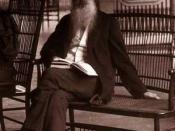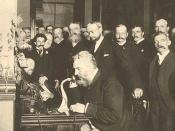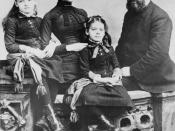In 1876, at the age of 29, Alexander Graham Bell invented his telephone. In 1877, he formed the Bell Telephone Company, and in the same year married Mabel Hubbard and embarked on a yearlong honeymoon in Europe.
Alexander Graham Bell might easily have been content with the success of his telephone invention. His many laboratory notebooks demonstrate, however, that he was driven by a genuine and rare intellectual curiosity that kept him regularly searching, striving, and wanting always to learn and to create. He would continue to test out new ideas through a long and productive life. He would explore the realm of communications as well as engage in a great variety of scientific activities involving kites, airplanes, tetrahedral structures, sheep-breeding, artificial respiration, desalinization and water distillation, and hydrofoils.
With the enormous technical and later financial success of his telephone invention, Alexander Graham Bell's future was secure, and he was able to arrange his life so that he could devote himself to his scientific interests.
Toward this end, in 1881, he used the $10,000 award for winning France's Volta Prize to set up the Volta Laboratory in Washington, D.C. A believer in scientific teamwork, Bell worked with two associates, his cousin Chichester Bell and Charles Sumner Tainter, at the Volta Laboratory. Their experiments soon produced such major improvements in Thomas Edison's phonograph that it became commercially viable. After 1885, when he first visited Nova Scotia, Bell set up another laboratory there at his estate, Beinn Bhreagh (pronounced Ben Vreeah), near Baddeck, where he would assemble other teams of bright young engineers to pursue new and exciting ideas.
Among one of his first innovations after the telephone was the "photophone," a device that enabled sound to be transmitted on a beam of light. Bell and his assistant, Charles Sumner Tainter...


